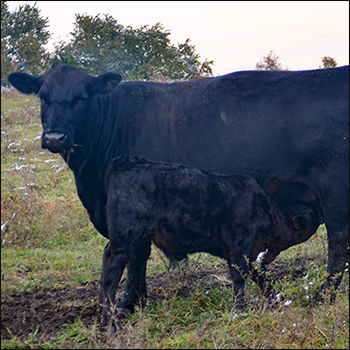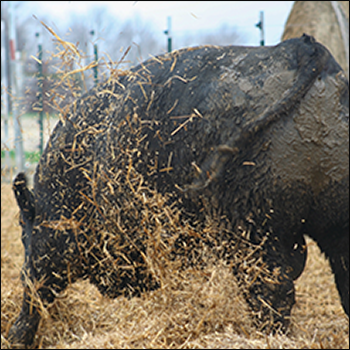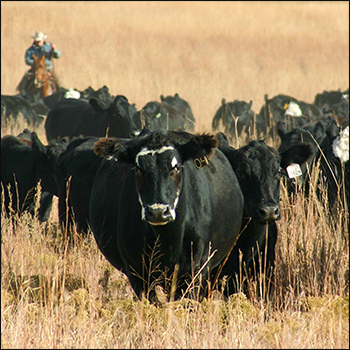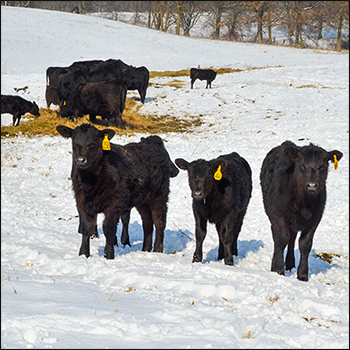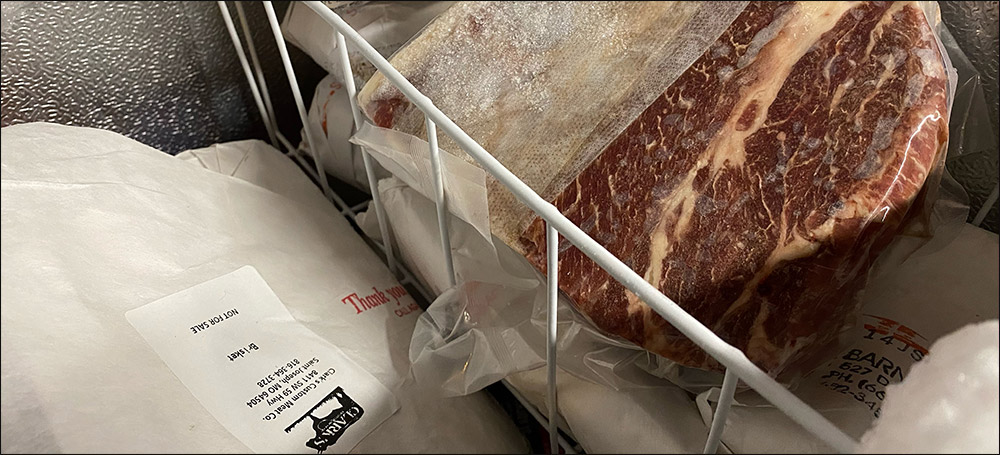
Direct-marketing Beef
Tips to remember when selling beef off the ranch.
It’s not as simple as some people think. While more farmers and ranchers have become interested in bypassing the middlemen and selling beef directly to consumers, there’s more to it than posting “beef for sale” on social media. Even though increasing numbers of consumers like the idea of buying beef directly from producers, cultivating their loyalty isn’t easy.
Those were a couple of the warnings offered to direct-marketing neophytes during the 2021 Range Beef Cow Symposium hosted Nov. 16-17 in Rapid City, S.D. Dampening the entrepreneurial spirit was not the purpose of a presentation by a pair of South Dakota State University meat scientists. Rather, Amanda Blair and Christina Bakker encouraged aspiring meat marketeers to do it right. They urged the audience to think about production and marketing management considerations important to the long-term success of a direct-marketing enterprise.
According to Blair, individual preferences typically dictate consumer beef-buying decisions. To compete for customers, she advised producers to know what kind of product they intend to market and be able to provide it consistently. Blair observed that a wide range of customer preferences allows for different kinds of products, including both grass-finished and grain-fed beef. She reminded the audience that the most capable communicators are able to enhance demand by explaining the traits that differentiate their particular product from others, without disparaging the competition.
Blair stressed the importance of animal genetics, nutrition and adequate feeding facilities to assure desired outcomes. Success hinges on the producer’s ability to meet customer expectations and provide excellent customer service.
“To attract and keep customers, it has to be as good, or better, than buying at retail,” stated Blair.
Christina Bakker offered considerations associated with processing of animals for direct marketing. She allowed that many rural communities have small, custom processors, but most offer “custom exempt” services, meaning the meat they process must be for home use by the animal owner’s family, guests and employees. The packaged meat must be labeled “not for sale” and cannot be sold or donated to others.
Bakker said producers may make use of a custom-exempt processor when live animals or shares in a live animal have been sold prior to processing. However, producers intending to market retail cuts must use the services of a processor operating under USDA inspection or a state inspection program. Bakker said state inspection requirements are at least as strict as those of the USDA’s Food Safety Inspection Service {FSIS). However, the advantage to federal inspection is that the meat can be sold in interstate commerce, and it may be exported. Under state inspection, meat may be sold intrastate only.
Other direct-marketing considerations discussed by Bakker included wet vs. dry aging, differences in grass-finished beef’s fat color, closeness of fat trim and other factors that may influence customer satisfaction. Customers may be leery of the product if the product or its packaging doesn’t look like what they are accustomed to seeing in a grocery store. Producers were urged to be transparent about production practices and advise customers about what to expect from the processed and packaged product.
“Seventeen percent of consumers will walk away from a source after just one bad experience,” warned Bakker. “If they have more than one bad experience, 59% of consumers will find a different source.”
Editor’s note: Troy Smith is a cattleman and freelance writer from Sargent, Neb. Photo by Kasey Brown.

Angus Proud
In this Angus Proud series, Editorial Intern Jessica Wesson provides insights into how producers across the country use Angus genetics in their respective environments.
 Angus Proud: Scott Sproul
Angus Proud: Scott Sproul
Oklahoma operation learned wisdom of moving calving season to better suit their marketing needs.
 Angus Proud: Bubba Crosby
Angus Proud: Bubba Crosby
Fall-calving Georgia herd uses quality and co-ops to market calves.
 Angus Proud: Jim Moore
Angus Proud: Jim Moore
Arkansas operation retains ownership through feeding and values carcass data.
 Angus Proud: Les Shaw
Angus Proud: Les Shaw
South Dakota operation manages winter with preparation and bull selection.
 Angus Proud: Jeremy Stevens
Angus Proud: Jeremy Stevens
Nebraska operation is self-sufficient for feedstuffs despite sandy soil.

